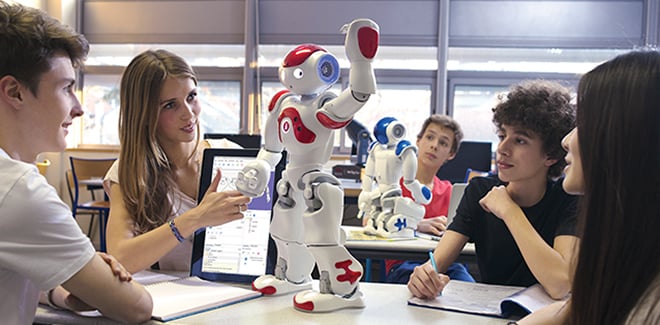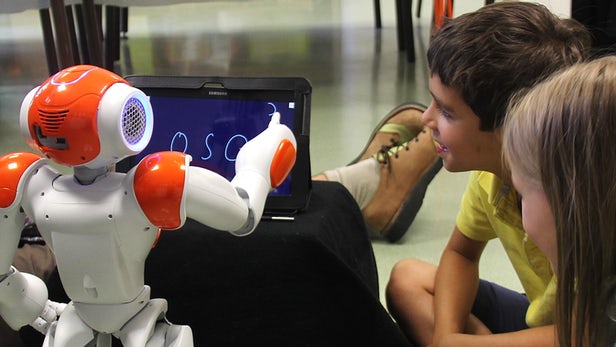When you were a child, did you ever dream of having an imaginary buddy to help you with your schoolwork? What has long been the stuff of science fiction may soon become a reality. With the progress that has been made in the fields of artificial intelligence (AI) and machine learning, the idea that every child could have a personal robot tutor is no longer so outlandish, and some schools and countries have already introduced robots into the classroom. What role can AI play in education, and what promises and challenges does it entail?

In 1997, when the supercomputer Deep Blue defeated world chess champion Garry Kasparov in a dramatic six-game match, the world suddenly took notice of the existence of artificial intelligence and its potential. Since then, AI has made several spectacular technological leaps. Today’s machines are not only capable of performing billions of operations per second, they are also able to learn. In 2017, it took the computer program AlphaZero just a few hours of playing thousands of games against itself to reach a level of proficiency no human chess player can match.
With the advances they have made over the past 20 years, artificial intelligence and machine learning have begun to permeate nearly every aspect of our everyday lives – and education is no exception. Research in the fields of educational robotics and neurocomputing is now focusing on building machines that can effectively support learning and teaching – and a great deal has already been accomplished. One of the goals is to create robot tutors that can adapt to each child’s needs.
This idea holds great promise. Robot tutors that are capable of learning would allow teaching to become much more personalized, since they can adapt as the child progresses. If pupils struggle with an exercise, the robot can provide extra practice; once they have mastered the material, the robot can move on to more difficult subject matter, in keeping with the principle of scaffolded learning. The robot can also adapt its strategies to the needs of children with learning difficulties.
Today teachers are often forced to “teach to the middle” – leaving struggling students behind and boring the fastest learners. A robot can provide extra support, allowing teachers to work with students one-on-one or concentrate on areas of particular concern. Artificial intelligence can also provide new tools for assessing students’ grasp of the material they have been taught, so that educators can adjust their strategies accordingly.
Researchers therefore hope that the use of AI will eventually lead to more motivated students, since it will make it possible to gear instruction to children’s abilities and how they learn, and to choose the approaches that will work best for each individual. This will be especially beneficial for children with learning difficulties, differences, or disabilities.
We are far from realizing such a vision, however, not least because of technological challenges. One issue is that robots are still very specialized; for example, a robot might be good at teaching math but not geography. As a result, each robot would need to be programmed with several completely different algorithms. Moreover, technology is only useful if the underlying teaching approach is sound.
There are also serious moral and philosophical concerns. The very idea that AI will eventually be capable of understanding and reproducing how we think and learn makes many people uncomfortable. Some also worry that children may find it difficult to differentiate their interactions with human-like robots from their interactions with actual human beings. If they were to abuse robots, they might show similar behavior when dealing with people, too. There are significant concerns about algorithmic bias and data ethics as well.
Instead of worrying that robots might replace human beings, we should recognize the potential of robots to work with teachers to amplify human capabilities.
Finally, no one likes the idea that robots might take over our jobs, perhaps even replacing teachers. But a good teacher will always be irreplaceable. Unlike robots, teachers are capable of forming human bonds with children. Dedicated teachers inspire and offer emotional support in a very unique way.
Teachers are also essential in creating a positive classroom environment, encouraging healthy relationships, fostering social and emotional development, and acting as role models. Instead of worrying that robots might replace human beings, we should recognize the potential of robots to work with teachers to amplify human capabilities.

Want to discover more robotics tools for your classsrom?
Check our products page and start planning your lessons with RobotLAB! and our learning Platform EngageK12!
RobotLAB products Take me to Engage! K12
This article is original from BOLD : https://bold.expert/robots-learning-companions-for-our-children/
